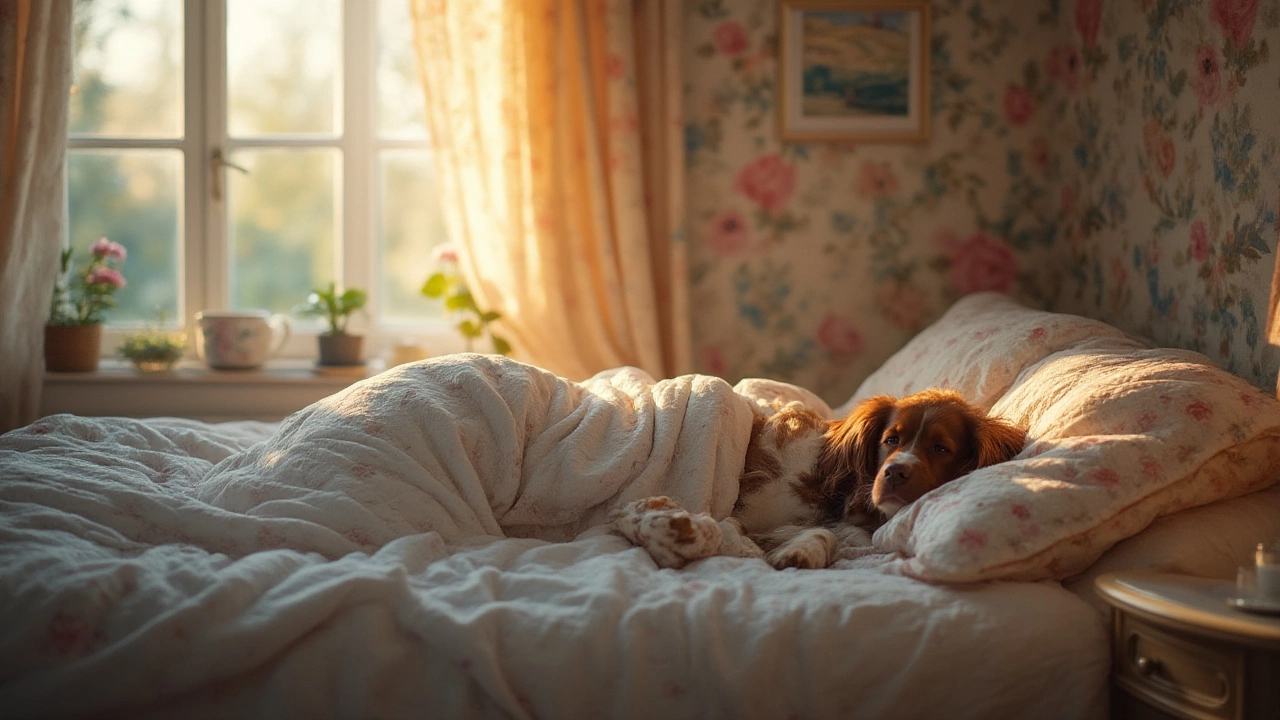Dogs Sleeping in Bed: What You Need to Know
If your dog paws at the pillow at night, you’re not alone. Many owners let their pooches curl up on the mattress, and it can feel comforting for both sides. But before you make it a habit, think about a few practical points so the arrangement works for everyone.
Why Dogs Want to Sleep With You
Dogs are pack animals. In the wild they huddle together for warmth and safety, so a human bed feels like a cozy den. The scent of their owner, the gentle rise and fall of breaths, and the soft surface all signal security. That’s why you’ll often hear a happy sigh from a dog that settles beside you.
There are also health perks. The close contact can lower a dog’s stress hormones, and some studies suggest it may even help lower the owner’s blood pressure. If you enjoy the extra snuggle, those benefits can be a nice bonus.
When Sharing a Bed Might Not Be a Good Idea
Not every dog is a good bed buddy. Large breeds can take up a lot of space, making it hard for you to get comfortable. Dogs with allergies, skin infections, or parasites could spread issues while you’re sleeping. Also, if you’re a light sleeper, a restless pup might disturb your rest.
Think about your own health, too. If you have asthma or are prone to colds, breathing in pet dander all night might trigger symptoms. In those cases, a dedicated dog bed or crate works better.
Setting Simple Rules That Keep Everyone Happy
1. Choose a spot. Decide whether the dog sleeps at the foot of the bed, on a blanket, or on a separate cushion. Consistency helps the dog understand what’s expected.
2. Teach “off” and “up”. Use a command like “off” when you need the dog to leave the bed, and reward calm behavior when they stay in their own spot.
3. Keep it clean. Wash the bedding weekly and vacuum the mattress to reduce dander and fur buildup. A clean environment protects both of you.
4. Watch for signs of discomfort. If the dog snores loudly, moves a lot, or wakes you, it may be time to switch to a dog‑specific bed.
Best Alternatives for a Comfortable Night
If you decide a separate sleeping area is smarter, choose a dog bed that mimics the softness of your mattress. Orthopedic foam works well for older dogs with joint issues. Place the bed near your own so the dog still feels close, but you both get enough space.
Another option is a crate with a soft blanket. Many dogs feel safe inside a crate, and it prevents them from wandering around the room at night. Just make sure the crate is big enough for the dog to stretch out.
Bottom line: letting your dog sleep in your bed can be a pleasant routine, as long as you set clear boundaries and keep hygiene in mind. Try out a few arrangements, notice how both of you feel in the morning, and adjust accordingly. Your pup will thank you with a happy wag, and you’ll get the restful night you need.
Does Sleeping With Your Dog Cause Separation Anxiety? What Science Says
Uncover whether letting your dog sleep in your bed truly causes separation anxiety, and get science-backed advice to keep your furry friend happy.
